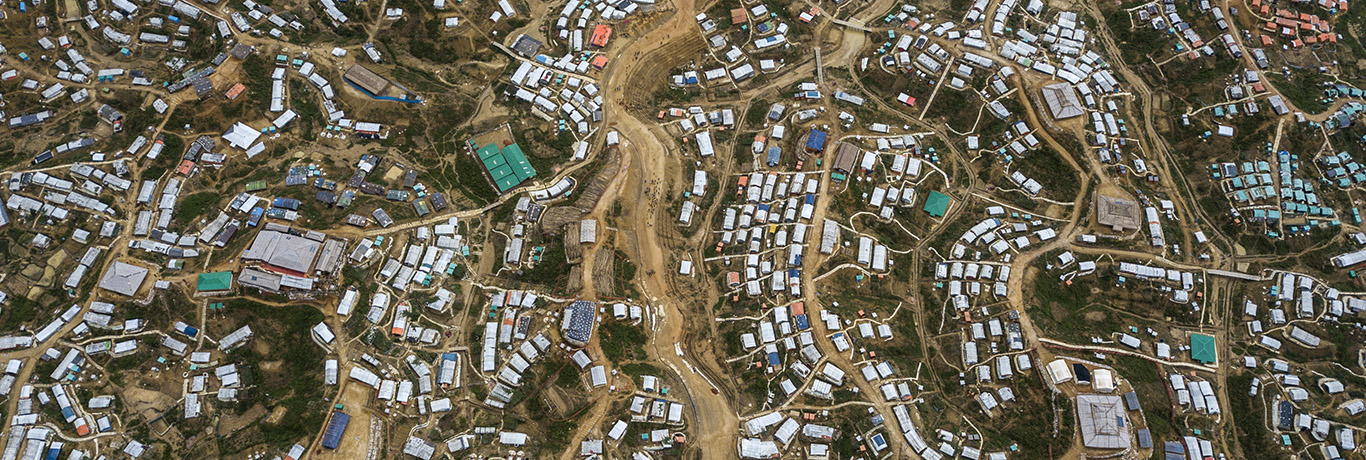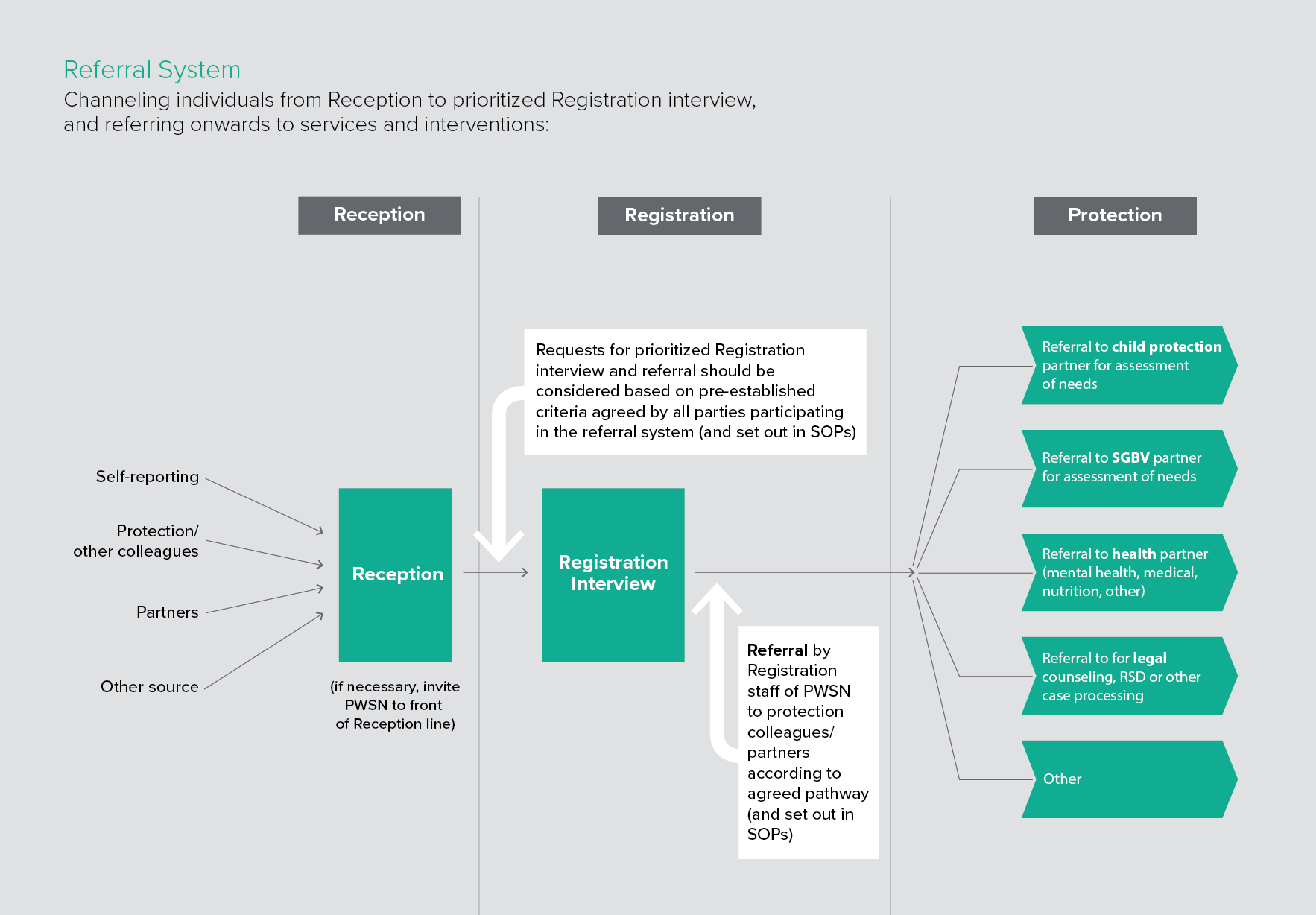The reception desk is generally the first point of contact between persons of concern and UNHCR, particularly in urban settings. Individuals approach the reception desk to obtain information, seek asylum, renew documents, report on protection problems and request help in the form of assistance and solutions. Fixed reception hours must be established during which individuals can approach UNHCR without an appointment. Where possible and relevant, dedicated reception hours may be necessary to receive persons who do not feel safe to approach during regular reception hours. During opening hours, the reception area should be attended by trained reception staff, UNHCR interpreters and security personnel to coordinate the orderly entry and reception of individuals. All efforts should be made to protect the dignity and privacy of individuals during reception, including by assigning numbers to individuals to avoid calling out their names in the presence of others as well as acceding to requests to speak privately when possible.
Prior to registration, group pre-registration information may be recorded in the Reception entity in proGres v4 (whether using RApp [link only for PRIMES users] or entering data directly into proGres). When group data is entered in the Reception entity, any interactions with refugees or asylum seekers undertaken ahead of registration may then be tracked through the various ‘entities’, including, for instance, initial assistance distribution, referrals to other services, scheduling appointments and recording basic communications (e.g. visits to UNHCR office, phone calls received, counselling provided). The Reception entity can also be used to track and record interactions where an operation does not conduct individual registration. From the moment individual registration is carried out, all further communications and referrals should be recorded through the Individual Registration form.


 If you are already using proGres v4 in your operation, please refer to the proGres v4 Registration Baseline SOP for data entry guidance and interpretation of data fields in the Reception Form.
If you are already using proGres v4 in your operation, please refer to the proGres v4 Registration Baseline SOP for data entry guidance and interpretation of data fields in the Reception Form.